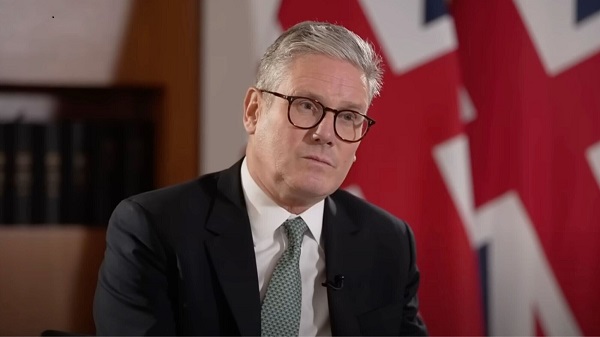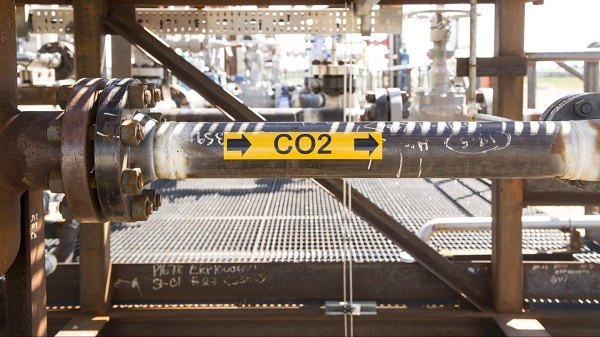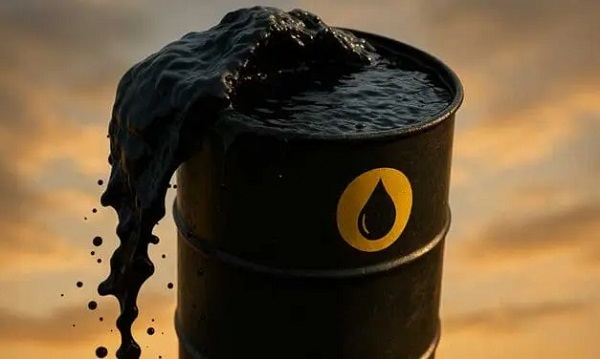Uncategorized
Britain, EU decide to take some time in getting Brexit right

BRUSSELS — Leaders from the European Union and Britain shrugged off a weekend negotiating debacle and previous deadlines Wednesday, giving themselves several more weeks to clinch a friendly divorce deal ahead of their separation.
After the EU insisted for months that the Wednesday summit was a key meeting to get a deal, its Brexit negotiator Michel Barnier said “we need much time, much more time and we continue to work in the next weeks” with his British counterpart.
British Prime Minister Theresa May also spoke about “working intensively over the next days and weeks” to achieve agreement that avoids a no-deal departure from the bloc on March 29 that could create chaos at the borders and in the economy. A deal must be sealed soon so parliaments have time to give their verdict on it.
Underscoring the newfound sense of non-urgency, Prime Minister Sebastian Kurz of Austria, which holds the rotating EU presidency, even spoke of the “coming weeks and months” to get a deal and sought to impose a soothing calm.
“There’s no need to dramatize matters. It’s always the case with negotiations, that in the end there are challenges,” he said.
May was preparing to address other EU leaders one day after European Council President Donald Tusk implored her to present new ideas for resolving the tricky problem of how to keep the land border between the Republic of Ireland and the U.K.’s Northern Ireland friction-free once Britain no longer is an EU member.
Tusk advised May that “creative” thinking from Britain was required to avoid a hard border on the island of Ireland, the issue that has brought divorce negotiations to a standstill. EU leaders dismissed May’s most recent proposal as unworkable.
But when the prime minister was asked in the House of Commons earlier Wednesday whether her government’s blueprint for an amicable divorce was dead, May replied: “The answer is no.”
The summit in Brussels had long been seen as the “moment of truth” in the two-year Brexit process. But after urgent talks on the Irish border ended Sunday without producing a breakthrough, Wednesday’s gathering looked more like a therapeutic bonding session than an occasion to celebrate.
The timeline for a deal has slipped into November, or even December, when another EU summit is scheduled.
“Today there will be no breakthrough,” said Lithuanian President Dalia Grybauskaite. She said 2 1/2 years after Britain’s Brexit referendum, the country had still not explained clearly how it wants to leave the EU.
“Today, we do not know what they want,” she said. “They do not know themselves what they really want. That is the problem.”
At present the two sides are proposing that Britain remains inside the EU single market and is still bound by its rules from the time it leaves the bloc in March until December 2020, to give time for new trade relations to be set up.
Many suspect that will not be enough time, which has led the EU to demand a “backstop” to ensure there are no customs posts or other controls along the currently invisible border between Northern Ireland and Ireland.
And there is talk that a transition period for the U.K. to adapt to its new status as a third country could be extended by a year.
Britain says it has not asked for an extension, but May has not yet come up with proposals for unblocking the Irish border logjam. She is hemmed in by pro-Brexit members of her Conservative Party, who oppose any more compromises with the bloc, and by her parliamentary allies in Northern Ireland’s Democratic Unionist Party, who insist a solution can’t include customs checks between Northern Ireland and the rest of the U.K.
___
Geir Moulson in Berlin contributed to this story.
Raf Casert, Lorne Cook And Jill Lawless, The Associated Press
Uncategorized
CNN’s Shock Climate Polling Data Reinforces Trump’s Energy Agenda


From the Daily Caller News Foundation
As the Trump administration and Republican-controlled Congress move aggressively to roll back the climate alarm-driven energy policies of the Biden presidency, proponents of climate change theory have ramped up their scare tactics in hopes of shifting public opinion in their favor.
But CNN’s energetic polling analyst, the irrepressible Harry Enten, says those tactics aren’t working. Indeed, Enten points out the climate alarm messaging which has permeated every nook and cranny of American society for at least 25 years now has failed to move the public opinion needle even a smidgen since 2000.
Appearing on the cable channel’s “CNN News Central” program with host John Berman Thursday, Enten cited polling data showing that just 40% of U.S. citizens are “afraid” of climate change. That is the same percentage who gave a similar answer in 2000.
Dear Readers:
As a nonprofit, we are dependent on the generosity of our readers.
Please consider making a small donation of any amount here.
Thank you!
Enten’s own report is an example of this fealty. Saying the findings “kind of boggles the mind,” Enten emphasized the fact that, despite all the media hysteria that takes place in the wake of any weather disaster or wildfire, an even lower percentage of Americans are concerned such events might impact them personally.
“In 2006, it was 38%,” Enten says of the percentage who are even “sometimes worried” about being hit by a natural disaster, and adds, “Look at where we are now in 2025. It’s 32%, 38% to 32%. The number’s actually gone down.”
In terms of all adults who worry that a major disaster might hit their own hometown, Enten notes that just 17% admit to such a concern. Even among Democrats, whose party has been the major proponent of climate alarm theory in the U.S., the percentage is a paltry 27%.
While Enten and Berman both appear to be shocked by these findings, they really aren’t surprising. Enten himself notes that climate concerns have never been a driving issue in electoral politics in his conclusion, when Berman points out, “People might think it’s an issue, but clearly not a driving issue when people go to the polls.”
“That’s exactly right,” Enten says, adding, “They may worry about in the abstract, but when it comes to their own lives, they don’t worry.”
This reality of public opinion is a major reason why President Donald Trump and his key cabinet officials have felt free to mount their aggressive push to end any remaining notion that a government-subsidized ‘energy transition’ from oil, gas, and coal to renewables and electric vehicles is happening in the U.S. It is also a big reason why congressional Republicans included language in the One Big Beautiful Bill Act to phase out subsidies for those alternative energy technologies.
It is key to understand that the administration’s reprioritization of energy and climate policies goes well beyond just rolling back the Biden policies. EPA Administrator Lee Zeldin is working on plans to revoke the 2010 endangerment finding related to greenhouse gases which served as the foundation for most of the Obama climate agenda as well.
If that plan can survive the inevitable court challenges, then Trump’s ambitions will only accelerate. Last year’s elimination of the Chevron Deference by the Supreme Court increases the chances of that happening. Ultimately, by the end of 2028, it will be almost as if the Obama and Biden presidencies never happened.
The reality here is that, with such a low percentage of voters expressing concerns about any of this, Trump and congressional Republicans will pay little or no political price for moving in this direction. Thus, unless the polls change radically, the policy direction will remain the same.
David Blackmon is an energy writer and consultant based in Texas. He spent 40 years in the oil and gas business, where he specialized in public policy and communications.
Uncategorized
Kananaskis G7 meeting the right setting for U.S. and Canada to reassert energy ties


Energy security, resilience and affordability have long been protected by a continentally integrated energy sector.
The G7 summit in Kananaskis, Alberta, offers a key platform to reassert how North American energy cooperation has made the U.S. and Canada stronger, according to a joint statement from The Heritage Foundation, the foremost American conservative think tank, and MEI, a pan-Canadian research and educational policy organization.
“Energy cooperation between Canada, Mexico and the United States is vital for the Western World’s energy security,” says Diana Furchtgott-Roth, director of the Center for Energy, Climate and Environment and the Herbert and Joyce Morgan Fellow at the Heritage Foundation, and one of America’s most prominent energy experts. “Both President Trump and Prime Minister Carney share energy as a key priority for their respective administrations.
She added, “The G7 should embrace energy abundance by cooperating and committing to a rapid expansion of energy infrastructure. Members should commit to streamlined permitting, including a one-stop shop permitting and environmental review process, to unleash the capital investment necessary to make energy abundance a reality.”
North America’s energy industry is continentally integrated, benefitting from a blend of U.S. light crude oil and Mexican and Canadian heavy crude oil that keeps the continent’s refineries running smoothly.
Each day, Canada exports 2.8 million barrels of oil to the United States.
These get refined into gasoline, diesel and other higher value-added products that furnish the U.S. market with reliable and affordable energy, as well as exported to other countries, including some 780,000 barrels per day of finished products that get exported to Canada and 1.08 million barrels per day to Mexico.
A similar situation occurs with natural gas, where Canada ships 8.7 billion cubic feet of natural gas per day to the United States through a continental network of pipelines.
This gets consumed by U.S. households, as well as transformed into liquefied natural gas products, of which the United States exports 11.5 billion cubic feet per day, mostly from ports in Louisiana, Texas and Maryland.
“The abundance and complementarity of Canada and the United States’ energy resources have made both nations more prosperous and more secure in their supply,” says Daniel Dufort, president and CEO of the MEI. “Both countries stand to reduce dependence on Chinese and Russian energy by expanding their pipeline networks – the United States to the East and Canada to the West – to supply their European and Asian allies in an increasingly turbulent world.”
Under this scenario, Europe would buy more high-value light oil from the U.S., whose domestic needs would be back-stopped by lower-priced heavy oil imports from Canada, whereas Asia would consume more LNG from Canada, diminishing China and Russia’s economic and strategic leverage over it.
* * *
The MEI is an independent public policy think tank with offices in Montreal, Ottawa, and Calgary. Through its publications, media appearances, and advisory services to policymakers, the MEI stimulates public policy debate and reforms based on sound economics and entrepreneurship.
As the nation’s largest, most broadly supported conservative research and educational institution, The Heritage Foundation has been leading the American conservative movement since our founding in 1973. The Heritage Foundation reaches more than 10 million members, advocates, and concerned Americans every day with information on critical issues facing America.
-

 Business1 day ago
Business1 day agoDeportations causing delays in US construction industry
-

 Frontier Centre for Public Policy17 hours ago
Frontier Centre for Public Policy17 hours agoBloodvein Blockade Puts Public Land Rights At Risk
-

 Business2 days ago
Business2 days agoRed tape is killing Canadian housing affordability
-

 Health2 days ago
Health2 days agoMAiD should not be a response to depression
-

 Alberta21 hours ago
Alberta21 hours agoParents group blasts Alberta government for weakening sexually explicit school book ban
-

 Crime1 day ago
Crime1 day agoCanadian teacher showed Charlie Kirk assassination video to young students, said he deserved to die
-

 International2 days ago
International2 days agoTrump to Confront Starmer Over UK Free Speech Laws During State Visit
-

 Alberta2 days ago
Alberta2 days agoAlberta updates TIER system: Businesses can direct compliance payments to on-site technologies





